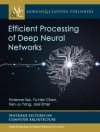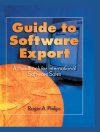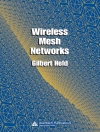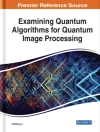This book is a comprehensive overview of AI fundamentals and applications to drive creativity, innovation, and industry transformation.
Generative AI stands at the forefront of artificial intelligence innovation, redefining the capabilities of machines to create, imagine, and innovate. GAI explores the domain of creative production with new and original content across various forms, including images, text, music, and more. In essence, generative AI stands as evidence of the boundless potential of artificial intelligence, transforming industries, sparking creativity, and challenging conventional paradigms. It represents not just a technological advancement but a catalyst for reimagining how machines and humans collaborate, innovate, and shape the future.
The book examines real-world examples of how generative AI is being used in a variety of industries. The first section explores the fundamental concepts and ethical considerations of generative AI. In addition, the section also introduces machine learning algorithms and natural language processing. The second section introduces novel neural network designs and convolutional neural networks, providing dependable and precise methods. The third section explores the latest learning-based methodologies to help researchers and farmers choose optimal algorithms for specific crop and hardware needs. Furthermore, this section evaluates significant advancements in revolutionizing online content analysis, offering real-time insights into content creation for more interactive processes.
Audience
The book will be read by researchers, engineers, and students working in artificial intelligence, computer science, and electronics and communication engineering as well as industry application areas.
Table of Content
Preface xiii
1 Exploring the Creative Frontiers: Generative AI Unveiled 1
Generated Using Chat GPT
1.1 Introduction 1
1.1.1 Definition and Significance of Generative AI 1
1.1.2 Historical Overview and Development 2
1.2 Foundational Concepts 4
1.2.1 Neural Networks and Generative Models 4
1.2.2 Variational Autoencoders (VAEs) and Generative Adversarial Networks (GANs) 5
1.3 Applications Across Domains 7
1.3.1 Creative Arts: Music, Visual Arts, Literature 7
1.3.2 Content Generation: Text, Images, Videos 8
1.3.3 Scientific Research and Data Augmentation 9
1.3.4 Healthcare and Drug Discovery 10
1.3.5 Gaming and Virtual Environments 12
1.4 Ethical Considerations 13
1.5 Future Prospects and Challenges 15
1.6 Conclusion 16
Reference 17
2 An Efficient Infant Cry Detection System Using Machine Learning and Neuro Computing Algorithms 19
Swarna Kuchibhotla, Kantheti Mohana, Alapati Yomitha, Sruthi Yedavalli, Hima Deepthi Vankayalapati and Kyamakya Kyandoghere
2.1 Introduction 20
2.2 Literature Survey 21
2.3 Methodology 23
2.3.1 Database 24
2.3.2 Feature Extraction 25
2.3.2.1 Short-Term Energy 25
2.3.2.2 Mel-Frequency Cepstral Coefficients 26
2.3.2.3 Spectrograms 27
2.3.3 Classification 29
2.3.4 Convolutional Neural Network (CNN) 29
2.3.5 Recurrent Neural Network (RNN) 31
2.3.6 Regularized Discriminant Analysis (RDA) 31
2.3.7 Multi-Layer Perceptron (MLP) 33
2.4 Experimental Results 33
2.5 Conclusion 35
References 35
3 Improved Brain Tumor Segmentation Utilizing a Layered CNN Model 39
Bilal Hikmat Rasheed and P. Sudhakaran
3.1 Introduction 40
3.2 Related Works 41
3.3 Methodology 42
3.4 Numerical Results 45
3.5 Conclusion 49
References 49
4 Natural Language Processing in Generative Adversarial Network 53
P. Dhivya, A. Karthikeyan, S. Pradeep and H. Umamaheswari
4.1 Introduction 54
4.2 Literature Survey 57
4.3 The Implementation of NLP in GAN for Generating Images and Summaries 61
4.3.1 Working of Sequence Generative Adversarial Network (Seq GAN) 61
4.3.2 Working of Generative Adversarial Transformer (GAT) 63
4.3.2.1 Steps to Incorporate NLP in GAN 64
4.3.3 Implementation of NLP in GAN 65
4.3.4 Generate the Image Using Textual Description 68
4.3.5 Text Summarization 69
4.3.5.1 Graph-Based Summarization 71
4.4 Conclusion 77
References 77
5 Modeling A Deep Learning Network Model for Medical Image Panoptic Segmentation 81
Jyothsna Devi Koppagiri and Gouranga Mandal
5.1 Introduction 81
5.2 Related Works 84
5.3 Methodology 85
5.3.1 Deep Masking Convolutional Model (DMCM) 85
5.4 Numerical Results and Discussion 87
5.5 Conclusion 91
References 91
6 A Hybrid Dense Net Model for Dental Image Segmentation Using Modern Learning Approaches 93
Pulipati Nagaraju and S. V. Sudha
6.1 Introduction 94
6.2 Related Works 95
6.3 Methodology 96
6.3.1 Dataset 96
6.3.2 Dense Transformer Model 97
6.3.3 Dense Net Model 100
6.4 Numerical Results and Discussion 100
6.4.1 Discussion 103
6.5 Conclusion 104
References 104
7 Modeling A Two-Tier Network Model for Unconstraint Video Analysis Using Deep Learning 107
P. Naga Bhushanam and Selva Kumar S.
7.1 Introduction 108
7.2 Related Works 109
7.3 Methodology 110
7.4 Numerical Results and Discussion 113
7.5 Conclusion 117
References 118
8 Detection of Peripheral Blood Smear Malarial Parasitic Microscopic Images Utilizing Convolutional Neural Network 121
Tamal Kumar Kundu, Smritilekha Das and R. Nidhya
8.1 Introduction 122
8.2 Malaria 124
8.2.1 Malaria-Infected Red Blood Cells with Types 124
8.3 Literature Survey 125
8.4 Proposed Methodology and Algorithm 130
8.4.1 Proposed Algorithm 135
8.5 Result Analysis 135
8.5.1 Dataset 135
8.5.2 Preprocessing of Data 135
8.5.3 Splitting of Dataset 137
8.5.4 Classification 137
8.5.5 Model Prediction and Performance Metrics 137
8.5.6 CNN Learning Curves 138
8.6 Discussion 139
8.7 Conclusion 139
8.8 Future Scope 139
References 140
9 Exploring the Efficacy of Generative AI in Constructing Dynamic Predictive Models for Cybersecurity Threats: A Research Perspective 143
T. Manasa and K. Padmanaban
9.1 Introduction 144
9.2 Related Works 145
9.3 Methodology 146
9.3.1 Pre-Processing 147
9.3.2 Classifier 147
9.3.3 Optimization 148
9.4 Numerical Results and Discussion 149
9.5 Conclusion 152
References 152
10 Poultry Disease Detection: A Comparative Analysis of CNN, SVM, and YOLO v3 Algorithms for Accurate Diagnosis 155
Spoorthi Shetty and Mangala Shetty
10.1 Introduction 156
10.2 Literature Review 157
10.3 Objectives 158
10.3.1 Accurate Disease and Early Disease Identification 158
10.3.2 Multi-Class Disease Identification 158
10.3.3 Automation and Real-Time Disease Monitoring 159
10.3.4 Better Accuracy 159
10.4 Methodology 159
10.4.1 Dataset 159
10.4.2 Data Preprocessing 160
10.4.3 Image Preprocessing 161
10.4.4 Data Augmentation 161
10.4.5 Extracting Region of Interest 162
10.5 Results and Discussion 165
10.6 Conclusion 169
References 170
11 Generative AI-Enhanced Deep Learning Model for Crop Type Analysis Based on Clustered Feature Vectors and Remote Sensing Imagery 173
B. Bazeer Ahamed, D. Yuvaraj and Saif Saad Alnuaimi
11.1 Introduction 174
11.2 Related Works 176
11.3 Methodology 178
11.3.1 Saliency Analysis 180
11.3.2 Saliency Region Analysis with Belief Networking 181
11.3.3 Group Analysis 182
11.3.4 Classification 183
11.3.5 Parameter Setup 183
11.4 Numerical Results and Discussion 184
11.4.1 Dataset 186
11.4.2 Classification Results and Discussions 187
11.5 Conclusion 190
References 193
12 Cardiovascular Disease Prediction with Machine Learning: An Ensemble-Based Regressive Neighborhood Model 197
Yuvaraj Duraisamy, Salar Faisal Noori and Shakir Mahoomed Abas
12.1 Introduction 197
12.2 Related Works 200
12.3 Methodology 200
12.3.1 Pre-Processing 200
12.3.2 Feature Selection 202
12.3.3 Classification 202
12.4 Numerical Results and Discussion 203
12.5 Conclusion 206
References 207
13 Detection of Io T Attacks Using Hybrid RNN-DBN Model 209
Pavithra D., Bharathraj R., Poovizhi P., Libitharan K. and Nivetha V.
13.1 Introduction 210
13.2 Related Work 212
13.3 Methodology 216
13.3.1 Dataset Used 216
13.3.2 Data Preprocessing 217
13.3.3 Data Normalization 217
13.3.4 Multi-Class Classification 218
13.3.5 Splitting Dataset 219
13.3.6 RNN-DBN 219
13.4 Experiments and Results 221
13.5 Conclusion and Future Scope 224
References 224
14 Identification of Foliar Pathologies in Apple Foliage Utilizing Advanced Deep Learning Techniques 227
Tamal Kumar Kundu, Smritilekha Das and R. Nidhya
14.1 Introduction 228
14.2 Literature Survey 229
14.2.1 Disease Detection Using Machine and Deep Learning Techniques (2015–2021) 229
14.2.2 Disease Detection Using Transfer Learning (2015–2021) 232
14.3 Different Diseases of Leaves 233
14.4 Dataset 236
14.5 Proposed Methodology 239
14.6 Data Analysis 240
14.7 Pre-Processing Technique 241
14.8 Data Visualization 242
14.9 Evolutionary Progression and Genesis of Model 242
14.9.1 Evolution Model 243
14.9.2 Model Performance 244
References 246
15 Enhancing Cloud Security Through AI-Driven Intrusion Detection Utilizing Deep Learning Methods and Autoencoder Technology 249
P.V. Sivarambabu, Richa Agrawal, Arepalli Tirumala, Shaik Mahaboob Subani, Veeraswamy Parisae and S. V. L. Sowjanya Nukala
15.1 Introduction 250
15.2 Related Work 251
15.3 Proposed Methodology 253
15.3.1 DL-Based IDS for Cloud Security 253
15.4 Results and Discussion 254
15.4.1 Performance Analysis 258
15.4.1.1 Accuracy 259
15.4.1.2 Precision 260
15.4.1.3 Recall 260
15.4.1.4 F1 Score 261
15.4.1.5 AUC-Area Under the Curve 261
15.5 Conclusion 262
References 262
16 You Tube Comment Analysis Using LSTM Model 265
Pavithra D., Poovizhi P., Rokeshkumar G., Bharathvaj T. and Mageshkumar M.
16.1 Introduction 266
16.2 Related Work 266
16.3 Literature Survey 267
16.4 Existing System 272
16.5 Methodology 273
16.6 Result and Discussion 275
16.7 Conclusion 280
References 280
Index 283
About the author
R. Nidhya, Ph D, is an assistant professor in the Department of Computer Science & Engineering, Madanapalle Institute of Technology & Science, affiliated with Jawaharlal Nehru Technical University, Anantapuram, India. She has published many research papers in international journals and her research interests include wireless body area networks, network security, and data mining.
D. Pavithra, Ph D, is an assistant professor at Dr. NGP Institute of Technology, Coimbatore, Tamil Nadu, India. Her current research interests include autism, machine learning, and deep learning.
Manish Kumar, Ph D, is an assistant professor at The School of Computer Science & Engineering, VIT, Chennai, India. His research interests include soft computing applications for bioinformatics problems and computational intelligence.
A. Dinesh Kumar, Ph D, is an associate professor at KL (Deemed to be University), Vijayawada, Andhra Pradesh, India. His current research interests include wireless body area networks, wireless sensor networks, network security, and artificial intelligence.
S. Balamurugan, Ph D, is the Director of Research and Development, Intelligent Research Consultancy Services (i RCS), Coimbatore, Tamil Nadu, India. He is also Director of the Albert Einstein Engineering and Research Labs (AEER Labs), as well as Vice-Chairman of the Renewable Energy Society of India (RESI), India. He has published 50+ books, 200+ international journals/conferences, and 35 patents.












